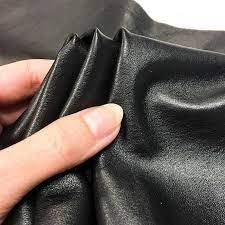Goods & Garments- Quality Control Inspector

In the sprawling landscape of the fashion industry, where trends come and go, one element remains constant: the pursuit of quality. Within the niche realm of leather goods and garments, ensuring excellence isn’t just a matter of aesthetics; it’s a testament to craftsmanship and integrity. At the heart of this endeavor lies the often unsung hero: the Quality Control Inspector. Tasked with upholding standards and scrutinizing every stitch, their role is indispensable in maintaining the reputation of brands and the satisfaction of consumers.
The Essence of Quality Control in Leather Goods
Leather is a material revered for its durability, versatility, and timeless appeal. From luxurious handbags to rugged jackets, it adorns the shelves of high-end boutiques and the closets of discerning individuals worldwide. However, the journey from rawhide to refined product is fraught with challenges, and maintaining quality at every stage is paramount.
Quality control in leather goods encompasses a multifaceted approach that begins long before the material reaches the manufacturing floor. Inspectors collaborate with suppliers to ensure the procurement of premium hides, free from blemishes and defects. This initial scrutiny sets the foundation for excellence, minimizing flaws that could compromise the final product’s integrity.
As the manufacturing process unfolds, inspectors maintain a vigilant presence, conducting rigorous assessments at key junctures. They scrutinize each cut, seam, and stitch, verifying adherence to design specifications and performance standards. Whether it’s assessing the suppleness of leather or the precision of embossing, their keen eye for detail ensures that only the finest pieces make it to market.
Navigating the Complexity of Garment Production
In the realm of leather garments, the stakes are equally high. Jackets, pants, and skirts demand a level of precision that transcends mere aesthetics; they must withstand the rigors of wear while exuding sophistication and style. Here, the role of the Quality Control Inspector becomes even more pronounced, as the intricacies of tailoring and construction come into play.
Inspectors work in tandem with patternmakers and seamstresses, offering insights that optimize both form and function. They assess the draping of fabric, the symmetry of seams, and the integrity of hardware, ensuring that each garment conforms to exacting standards. In a world where fit can make or break a garment, their meticulous attention to detail is the linchpin of success.
Moreover, the challenges of leather garment production extend beyond the workshop, encompassing factors such as environmental sustainability and ethical sourcing. Inspectors play a pivotal role in vetting suppliers and monitoring practices to uphold industry best practices. By championing transparency and accountability, they not only safeguard quality but also promote responsible stewardship of resources.

Embracing Innovation and Adaptation
In an era defined by technological advancement, the landscape of quality control is evolving at a rapid pace. Inspectors are harnessing the power of automation, leveraging machine vision and artificial intelligence to augment their capabilities. From defect detection algorithms to 3D imaging techniques, these tools empower inspectors to detect flaws with unparalleled precision, streamlining processes and enhancing efficiency.
Furthermore, the advent of blockchain technology is revolutionizing supply chain management, offering unprecedented traceability and accountability. Inspectors are at the forefront of this digital transformation, leveraging blockchain platforms to track the journey of raw materials from source to finished product. By establishing immutable records of authenticity and provenance, they fortify consumer confidence and combat counterfeit practices.
Yet, amidst these technological marvels, the human element remains irreplaceable. Inspectors embody a wealth of experience and expertise that no algorithm can replicate. Their intuition, honed over years of diligent practice, enables them to discern nuances that elude even the most advanced machinery. As such, the future of quality control in leather goods and garments lies in a harmonious fusion of human ingenuity and technological innovation.
The Legacy of Excellence
In the realm of leather goods and garments, quality is more than a standard; it’s a testament to tradition and heritage. From the storied ateliers of Europe to the bustling workshops of emerging artisans, the pursuit of excellence unites craftsmen and consumers alike. At the heart of this shared ethos stands the Quality Control Inspector, a guardian of quality and a custodian of craftsmanship.
As we navigate an ever-changing landscape, marked by shifting trends and emerging technologies, one thing remains constant: the enduring allure of quality. In leather goods and garments, where every stitch tells a story, the role of the Quality Control Inspector is not merely to inspect, but to inspire—to uphold the legacy of excellence that defines this timeless industry.
